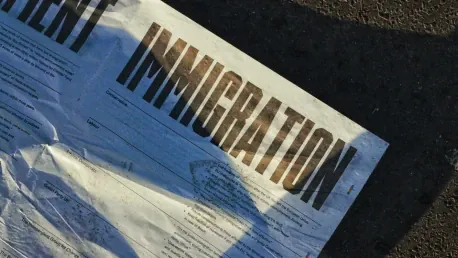In a controversial move, the Trump administration has issued a new directive that significantly alters existing immigration enforcement policies in schools and other sensitive locations. The policy change, which took effect on President Donald Trump’s first full day of his second term, repeals protections previously extended to educational institutions under the Biden administration. These protections had designated schools, colleges, hospitals, and churches as off-limits for immigration enforcement operations. The new directive now allows Immigration and Customs Enforcement (ICE) and Customs and Border Protection (CBP) agents to conduct enforcement activities, including arrests, within these institutions.
Policy Changes and Justifications
The Trump administration defends this policy shift by arguing that it grants law enforcement agencies the necessary authority to apprehend criminal aliens, such as murderers and rapists, who might exploit these locations to avoid arrest. This marks a significant departure from the previous administration’s stance, which aimed to create a safer environment for students and families by limiting immigration enforcement in places where they gather. Trump’s approach is based on the belief that undocumented immigrants are straining school systems, despite evidence suggesting that newcomer students have both fiscal and academic benefits for these institutions.
Trump and his supporters insist that tougher immigration policies are essential for national security and public safety. They argue that sanctuary policies and safe zones hinder law enforcement’s ability to carry out their duties and protect citizens. However, these claims are contrasted by studies showing that immigrants contribute positively to local economies and enrich the educational landscape. The new policy also mirrors Trump’s broader agenda of imposing stricter immigration controls, a stance that has been a hallmark of his presidency since his first term.
Impact on Schools and Communities
The elimination of the previous DHS guidelines, which had protected areas such as playgrounds, recreation centers, child care centers, and school bus stops, has sparked significant concern among immigrant advocates and educational institutions. With around 5.5 million children under the age of 18 living with an unauthorized immigrant parent as of 2019, the repercussions of this policy shift are expected to be profound. These children, constituting 7% of the U.S. child population, now face an increased risk of encountering immigration enforcement activities in their daily lives, potentially disrupting their education and well-being.
Schools and communities are now challenged with reassessing their strategies to ensure the safety and well-being of immigrant students in light of the new directive. Educational institutions, which had once been seen as sanctuaries from immigration enforcement, must navigate the complexities introduced by this policy change. The new reality requires school administrators, teachers, and community leaders to find ways to support and protect their students while operating within the confines of the updated immigration enforcement guidelines.
Broader Implications
In a move stirring significant controversy, the Trump administration has rolled out a new directive that dramatically changes existing immigration enforcement policies in schools and other designated sensitive locations. This policy shift, which went into effect on President Donald Trump’s first full day of his second term, rescinds the protections that were previously granted to educational institutions during the Biden administration. Under those former protections, schools, colleges, hospitals, and churches were considered off-limits for immigration enforcement actions. However, the new directive grants Immigration and Customs Enforcement (ICE) and Customs and Border Protection (CBP) agents the authority to carry out enforcement activities, including making arrests, within these once-protected institutions. Critics argue that this policy change could disrupt educational environments, compromise patient care in hospitals, and infringe on religious freedoms. Supporters, on the other hand, argue it allows for more effective enforcement of U.S. immigration laws.









